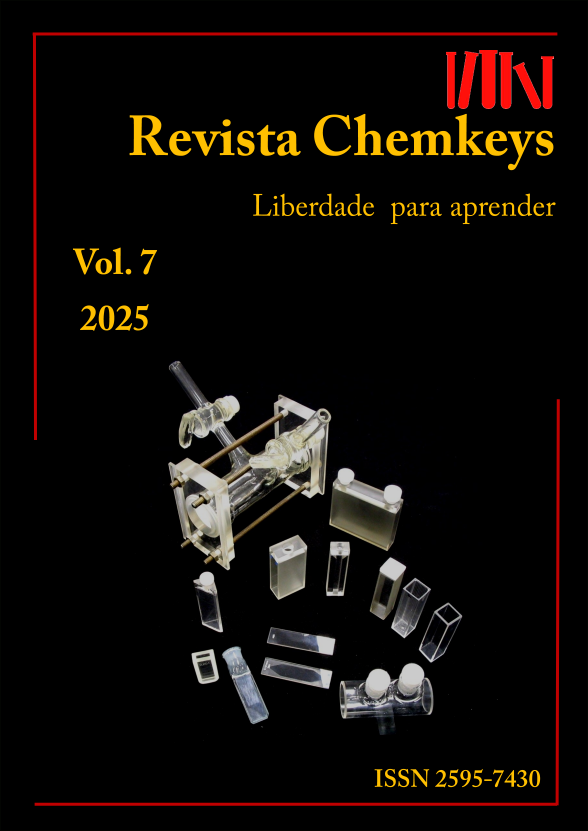Abstract
Circular Dichroism (CD) spectroscopy is a powerful analytical technique for studying chiral molecular systems, with broad applications in life sciences. It measures the differential absorption between left- and right-circularly polarized light, providing insights into the structural arrangement of asymmetric molecules. Instrumental advances over the past five decades have enabled precise measurements of CD signals, typically four orders of magnitude smaller than absorbance signals. Quantum mechanics-based computational methodologies, such as Density Functional Theory (DFT) and its Time-Dependent extension (TD-DFT), prove valuable for predicting and interpreting CD spectra. These approaches calculate electronic and optical properties of chiral molecules, complementing experimental analyses—particularly in complex systems where direct interpretation is challenging. Determining the absolute configuration of chiral molecules represents a central challenge in organic chemistry, biochemistry, and pharmacology. CD stands out as a primary technique for this purpose, with practical applications in drug development and natural product characterization; biotechnology (e.g., biosimilar production, where protein conformation must be preserved to ensure efficacy); and analysis of protein folding, stability, ligand binding, and responses to environmental changes.
References
- Berova N, Polavarapu PL, Nakanishi K, Woody RW. Comprehensive Chiroptical Spectroscopy. vol. 1. Hoboken, NJ: John Wiley & Sons, 2012.
- Greenfield NJ. Using Circular Dichroism Spectra to Estimate Protein Secondary Structure. Nature Protocols. 2006, 1: 2876-2890.
https://doi.org/10.1038/nprot.2006.202
- Rodger A, Norden B. Circular Dichroism and Linear Dichroism. Oxford Chemistry Masters. 1997, p.1-30.
- Barron LD. Molecular Light Scattering and Optical Activity. Cambridge University Press, 2004.
- Berova N, Nakanishi K, Woody RW. Circular Dichroism: Principles and Applications, 2nd ed., New York, Wiley-VCH, 2000.
- Greenfield NJ. Methods to Estimate the Conformation of Proteins and Polypeptides from Circular Dichroism Data. Anal. Biochem., 1996, 235: 1-10. https://doi.org/10.1006/abio.1996.0084
- Chen GC, Yang JT. Two-point Calibration of Circular Dichrometer with d-10- Camphorsulfonic Acid. Anal. Lett., 1977, 10: 1195-207. https://doi.org/10.1080/00032717708067855
- Pescitelli G, Bruhn T. Good Computational Practice in the Assignment of Absolute Configurations by TDDFT Calculations of ECD Spectra. Chirality. 2016, 28: 466-474.
https://doi.org/10.1002/chir.22600
- Pescitelli G, Woody RW. The Exciton Origin of the Visible Circular Dichroism Spectrum of Bacteriorhodopsin. The J. Phys. Chem. B., 2012, 116: 6751-6763. https://doi.org/10.1021/jp212166k
- Condon EU. Theories of Optical Rotatory Power. Rev. Mod. Phys. 1937, 9: 432-57.
https://doi.org/10.1103/RevModPhys.9.432
- Norden B. Applications of Linear Dichroism Spectroscopy. Appl. Spectrosc. Rev. 1980, 16: 389-426. http://dx.doi.org/10.1080/05704927808060393
- Kelly SM, Jess TJ, Price NC. How to Study Proteins by Circular Dichroism. Biochimica et Biophysica Acta (BBA) - Proteins and Proteomics. 2005, 1751: 119-139.
https://doi.org/10.1016/j.bbapap.2005.06.005
- Berova N, Polavarapu PL, Nakanishi K, Woody RW. Comprehensive Chiroptical Spectroscopy: Applications in Stereochemical Analysis of Synthetic Compounds, Natural Products and Biomolecules. Vol. 2, Wiley, 2012.
- Stephens PJ. Theory of Vibrational Circular Dichroism. J. Phys. Chem., 1985, 89:748-752.
https://doi.org/10.1021/j100251a006
- Goulon, J, Goulon-Ginet, C, Rogalev, AF, Gotte; V, Malgrange; C, Brouder, C, Natoli, CR. X-ray Natural Circular Dichroism in a Uniaxial Gyrotropic Single Crystal of LiO3. J. Chem. Phys. 1998, 108: 6394–6403. https://doi.org/10.1063/1.476046
- Rikken GLJA, Raupach E. Observation of Magneto-Chiral Dichroism. Nature. 1997, 390(6659): 493–494. http://dx.doi.org/10.1038/37323.
- Bustamante C, Tinoco I, Maestre MF. Circular Differential Scattering can be an Important Part of the Circular Dichroism of Macromolecules. Proceedings of the National Academy of Sciences. 1985, 82: 7978-7982.
- Morgon, NF, Custodio, R. Teoria do Funcional de Densidade. Quim. Nova. 1995, 18: 44-56.
- Ximenes VF, Morgon NH, Robinson de Souza A. Solvent-Dependent Inversion of Circular Dichroism Signal in Naproxen: An Unusual Effect! Chirality. 2018, 30: 1049–1053. http://dx.doi.org/10.1002/chir.22988.
- Grandini GS, Ximenes VF, Morgon NH, de Souza AR. Induced Chirality in Sulfasalazine by Complexation With Albumins: Theoretical and Experimental Study. Chirality. 2024, 36: e23696. http://dx.doi.org/10.1002/chir.23696.
- Grandini GS, Morgon NH, de Souza AR. Theoretical Study of the Interaction Between The Antibiotic Linezolid and the Active Site of the 50S Ribosomal Subunit of the Bacterium Haloarcula marismortui. Chirality. 2024, 36: e23629.
http://dx.doi.org/10.1002/chir.23629.
- Venturini D, de Souza AR, Caracelli I, Morgon NH, da Silva-Filho LC, Ximenes VF. Induction of Axial Chirality in Divanillin by Interaction with Bovine Serum Albumin. PLOS ONE 12(6): e0178597.
http://dx.doi.org/10. 1371/journal.pone.0178597.
- de Vasconcelos DN, Lima AN, Philot EA, Scott AL, Ferreira Boza IA, de Souza AR, et al. Methyl Divanillate: Redox Properties and Binding Affinity with Albumin of an Antioxidant and Potential NADPH Oxidase Inhibitor. RSC Advances. 2019, 9: 19983–19992.
http://dx.doi.org/10.1039/ c9ra02465d.
- Venturini D, Pastrello B, Zeraik ML, Pauli I, Andricopulo AD, Silva-Filho LC, et al. Experimental, DFT and Docking Simulations of the Binding of Diapocynin to Human Serum Albumin: Induced Circular Dichroism. RSC Advances. 2015. 5: 62220–62228.
http://dx.doi.org/10.1039/C5RA10960D.
- Sousa I, Heerdt G, Ximenes V, de Souza A, Morgon NH. TD-DFT Analysis of the Dissymmetry Factor in Camphor. J. Braz. Chem. Soc., 2020, 31: 613-618.
http://dx.doi.org/10.21577/0103-5053.20190226.
- Polavarapu PL. Optical Rotation: Recent Advances in Determining the Absolute Configuration. Chirality, 2002, 14: 768–781. http://dx.doi.org/ 10.1002/chir.10145.
- Raghavan V, Johnson JL, Stec DF, Song B, Zajac G, Baranska M, et al. Absolute Configurations of Naturally Occurring [5]- and [3]- Ladderanoic Acids: Isolation, Chiroptical Spectroscopy, and Crystallography. J. Nat. Prod. 2018, 81: 2654–2666.
http://dx.doi.org/10.1021/acs. jnatprod.8b00458.
- Gaussian 16. Wallingford, CT: Gaussian, Inc.; 2016. Software para cálculos de química quântica.
- Souza A, Boza I, Ximenes V, Yoguin M, Da vila-Rodriguez MJ, Morgon NH, et al. Elucidação da quiralidade induzida na molécula dansilglicina na complexação com a proteína albumina do soro humano (HSA). Quím. Nova. 2019, 42: 135-142.
http://dx.doi.org/10. 21577/0100-4042.20170341.
- T PL, Mondal M, Ramadas K, Natarajan S. Molecular interaction of 2, 4- diacetylphloroglucinol (DAPG) with human serum albumin (HSA): The spectros- copic, calorimetric and computational investigation. Spectrochim. Acta - Part A, 2017, 183: 90–102.

This work is licensed under a Creative Commons Attribution-NonCommercial-ShareAlike 4.0 International License.
Copyright (c) 2025 Aguinaldo Souza, Nelson Morgon


